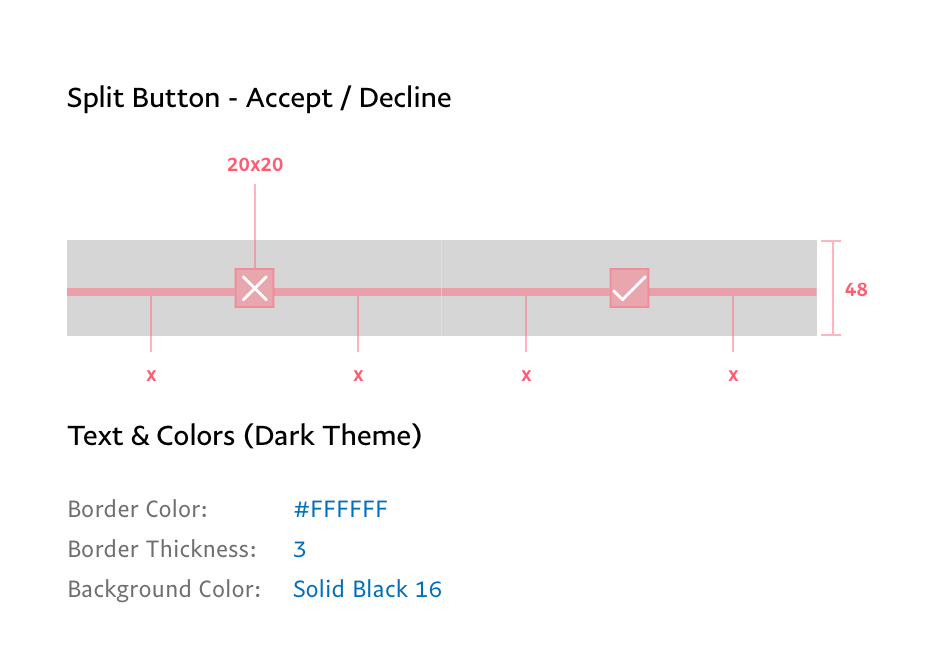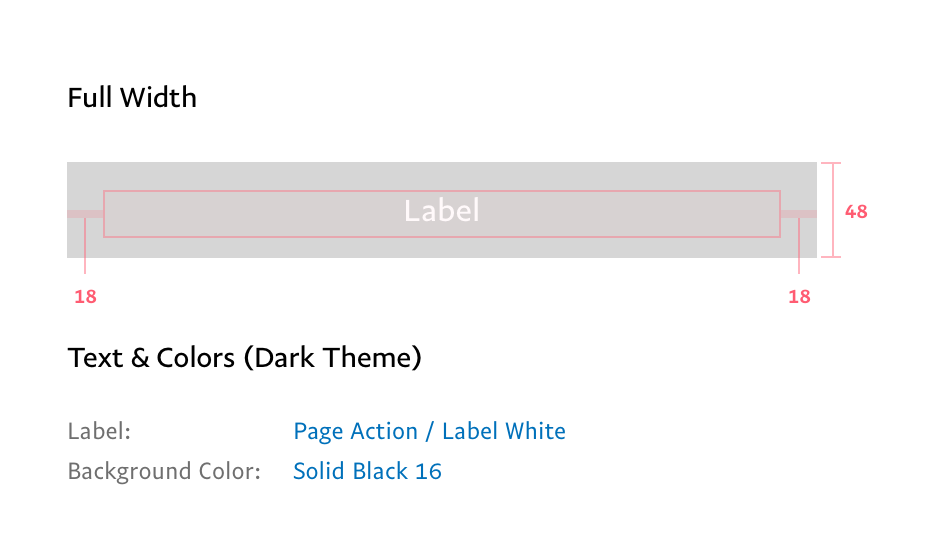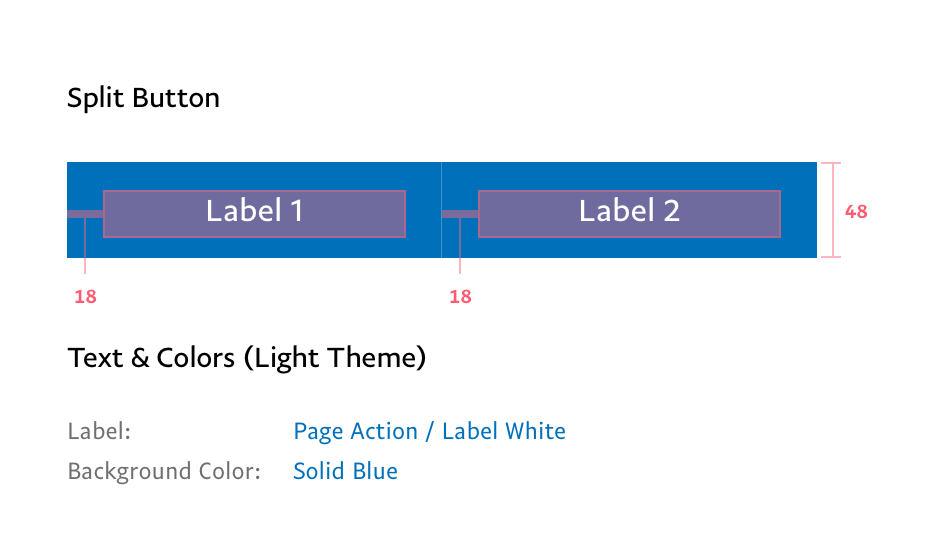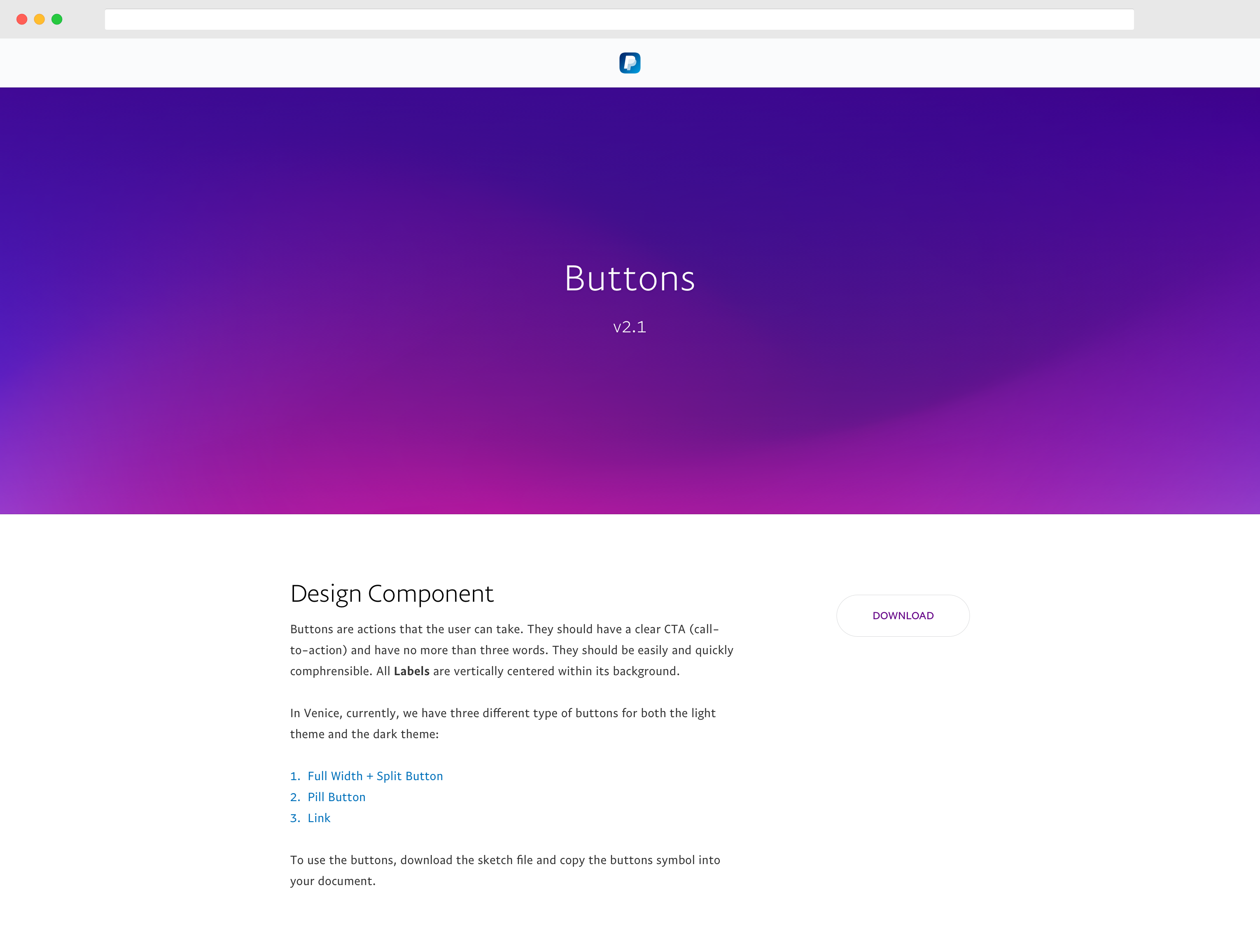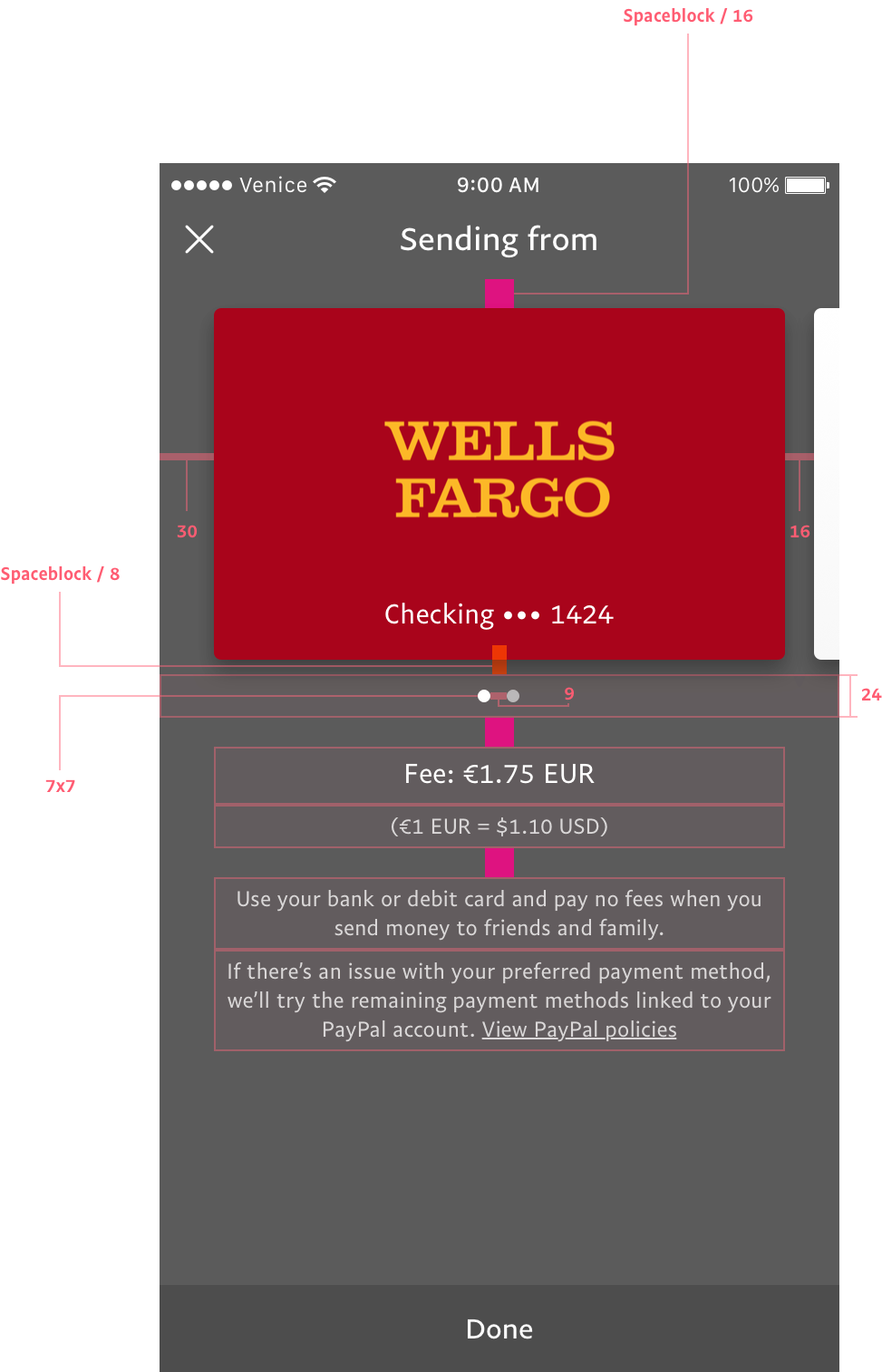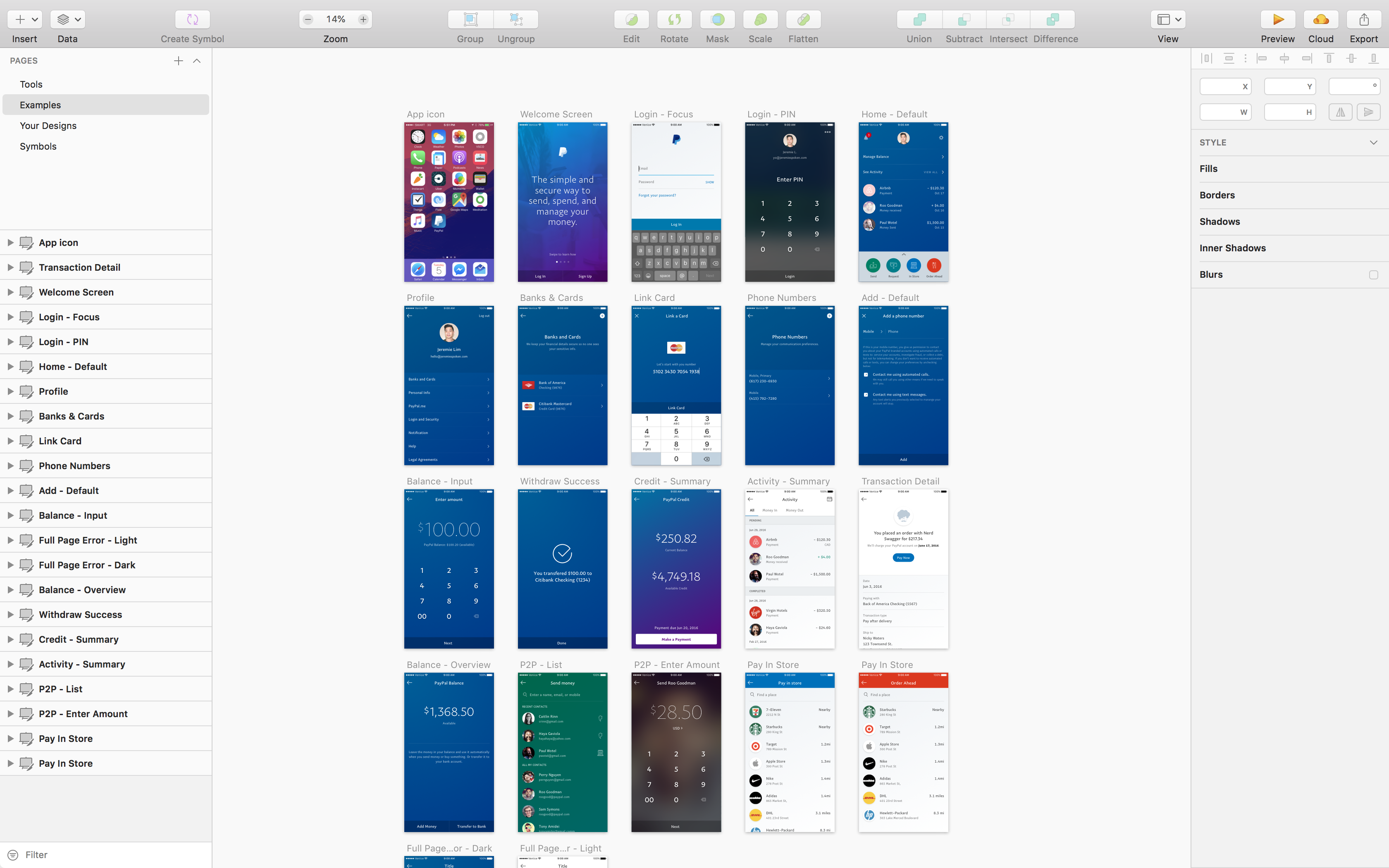Venice Guidelines
Venice Interface Guidelines (VIG), was the design language for the PayPal consumer mobile app, Venice. It is a project I co-created with my former colleagues Chris Sybico and Libo Su.
Our hope was to create reusable components and code that could be shared between different teams and make conversation with developers more efficient.
